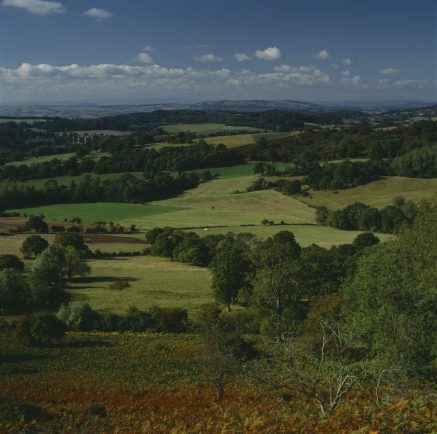THE NATIONAL Trust is tackling ash dieback in part of the Malvern Hills on the Herefordshire-Worcestershire border.
The disease has affected a large number of trees on Midsummer Hill and under the guidance of key stakeholders, an urgent management plan is needed.
Among the stakeholders are Historic England, Natural England and the Forestry Commission and the National Trust which is leading the project and will carry out sensitive felling of the worst affected trees.
Ash trees infected with the disease pose a serious risk to public safety as they become vulnerable and unpredictable, shedding limbs and boughs as they ‘die back’.
Ash dieback, or ‘chalara’, is an Asian fungal disease which spread to the British countryside from imported trees carrying the infection ten years ago.
The progress of the disease is rapid since the fungal spores can be carried by the wind for many miles.
It is not yet known what the full impact of the disease will be in Britain but it seems to affect up to 95 per cent of ash trees.
Midsummer Hill and its surroundings
Midsummer Hill consists of an Iron Age hillfort and has Scheduled Ancient Monument status.
It is therefore crucial the Trust minimises any impact to this historically significant landscape.
The felling will be carried out in one go in early spring to minimise disturbance.
Starting on March 21, it will take approximately two weeks to complete.
Trees will be felled manually and winched to lessen the impact on the ground.
Some carefully selected trees will be left, including oak, field maple and hawthorn pollards.
These will help to maintain the wood pasture and minimise the chance of future windthrow. Walking routes and access will always be made available, but safety diversions will be in place for the duration of the work.
Midsummer Hill also forms part of the much larger Malvern Hills Site of Special Scientific Interest (SSSI) and supports various habitats and wildlife.
These include many different species of birds, including the cuckoo, pied flycatcher, green woodpecker and redstart.
The Trust is ensuring minimal impact to the local wildlife while felling is undertaken, by:
Minimising opportunities for ground nesting birds to establish themselves in the area.
Carrying out ongoing inspections by ecologists to identify nesting birds and taping these areas off as non-intervention zones.
Carrying out pre-work assessments by ecologists to look for other protected species to ensure they are not negatively impacted by the felling.
What happens after the work?
Once felling work is complete, the area will be established as species-rich grassland, which will provide an excellent habitat and enhance the SSSI status.
It will also protect and better present the hillfort. Midsummer Hill Camp is one of the most well preserved and complex hillforts in Herefordshire.
Grassland has many benefits for wildlife and attracts insects, birds and arthropods such as millipedes and spiders.
Iain Carter, Herefordshire Countryside Manager for the National Trust, said: “Visitors to Midsummer Hill will notice a significant change to the landscape, but the work will be hugely beneficial both to the hillfort and wildlife in the long-term, as well as being necessary for public safety.”









